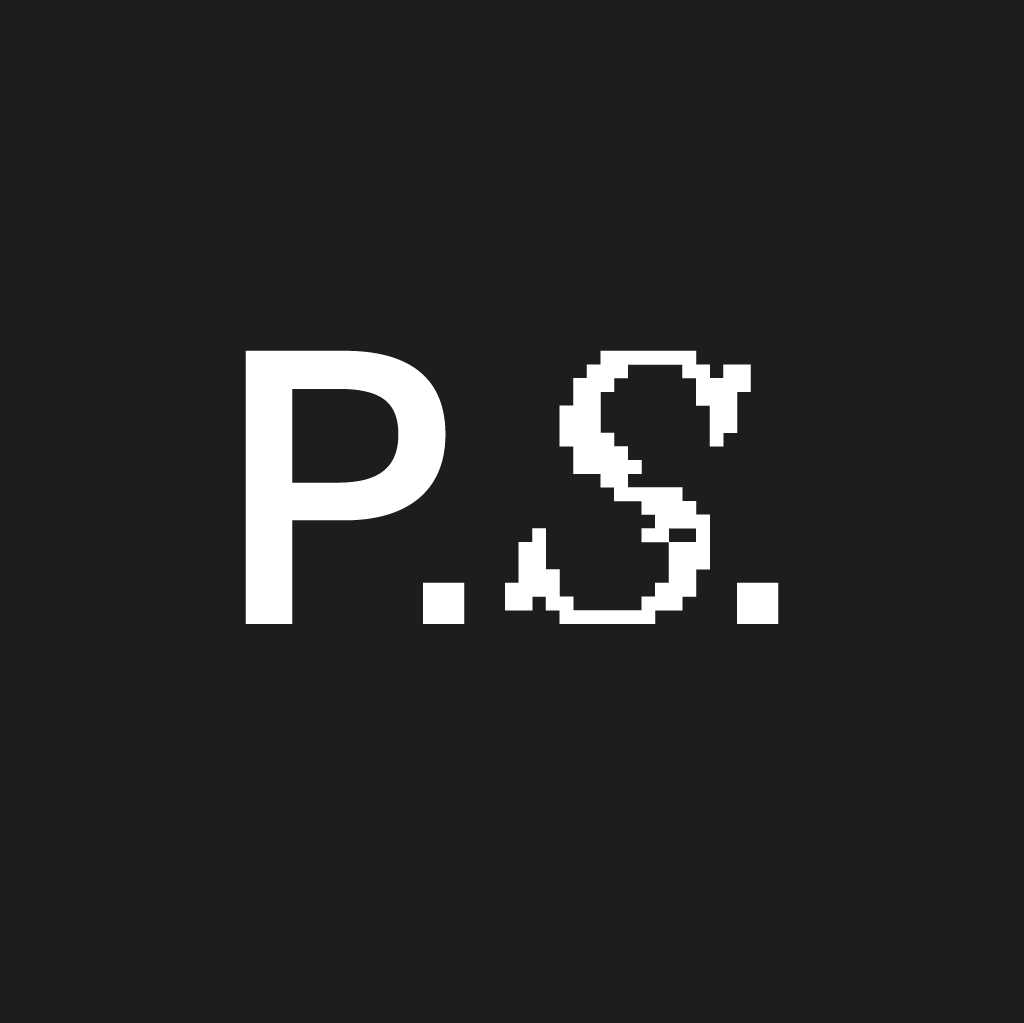Horseshoe Maximalism
The Office of Applied Strategy’s new dossier dives into a world where extremes collide, social rules bend and culture flows in unexpected directions. We speak to founder Tony Wang ahead of its release.
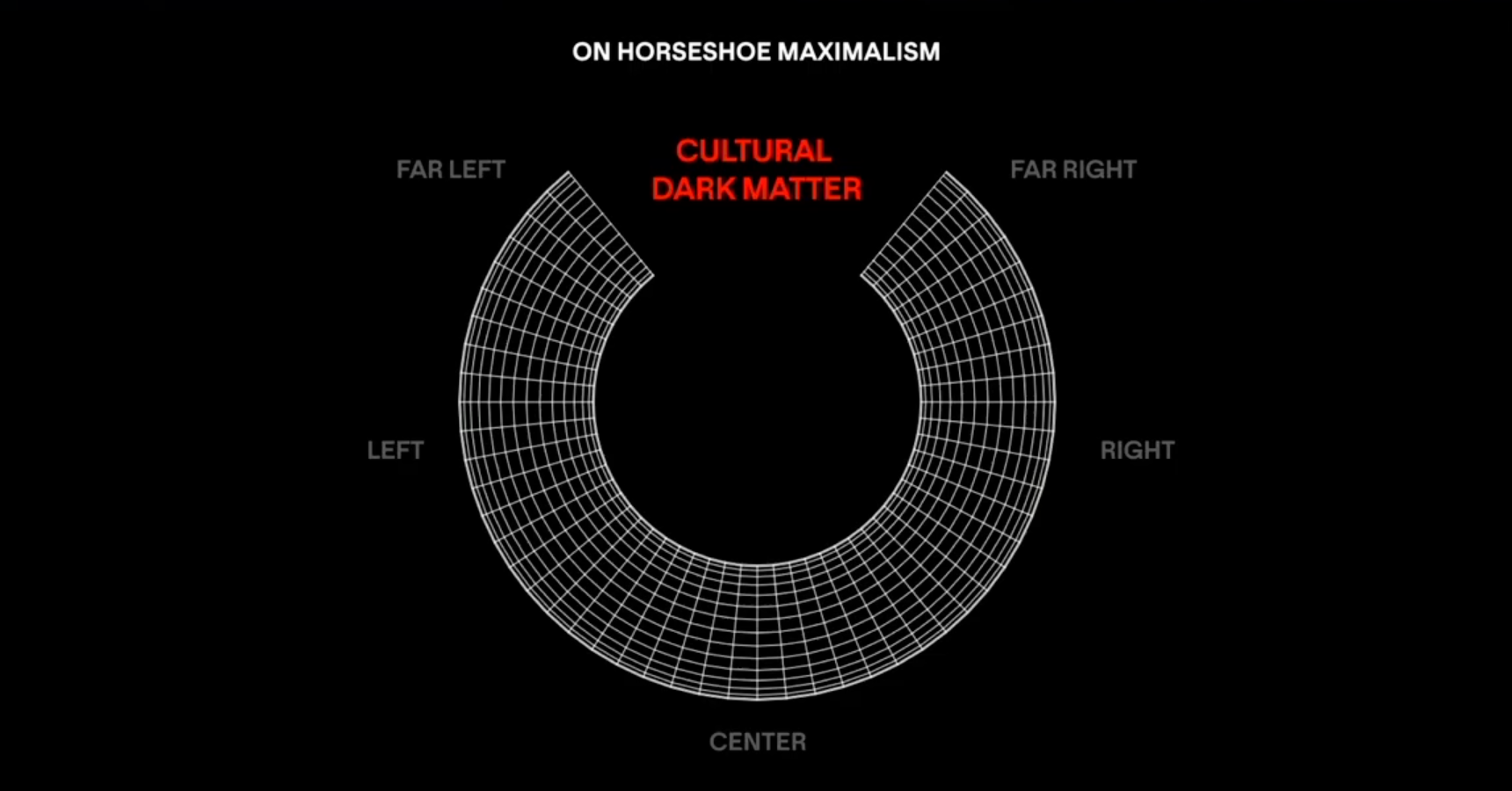
The Office of Applied Strategy (OAS) moves between think tank, strategy practice and venture fund, producing limited-edition cultural research publications that are as collectible as they are cerebral. After the release of Dossier 1 – a deep dive into hyper-optimisation that resold on Grailed for $200 and earned a profile in The New Yorker – OAS returns this week with Dossier 2.
The new publication spans 70 pages across seven chapters and introduces “Horseshoe Maximalism”, a framework for understanding a world where extremes fold into one another and opposites blur. As OAS explains: “From doomsday prepping to longevity to sports betting, the cultural temperament for the next decade is embodied by the theory of Horseshoe Maximalism.”
In conversation with Joanna Lowry, Protein AGENCY’s Head of Strategy, OAS founder Tony Wang unpacks the myth of progress, Gen Z’s “zealous nihilism” and a shifting world order born from alienation and institutional distrust.
Protein: In your new dossier, you introduce a framework called Horseshoe Maximalism. You describe it as a state where extremes fold back on themselves – where left and right, counterculture and mainstream, begin to overlap and merge. What first led you to this idea?
Tony Wang: Horseshoe Maximalism is the cultural temperament of our times. It’s a meta-phenomenon we coined to describe how so many of the consumer trends that have emerged over the past year embody this strange, heightened contradiction.
Labubus is a good example – partly because of how prevalent they are. There’s something quite extreme about the fact that it’s ostensibly a kids’ toy but, in reality, functions as a form of speculative gambling. At the core of this is a deepening polarisation. There’s growing distrust in institutions, which has led to the rise of new “outside experts” – voices that emerge precisely from that distrust of the establishment. We found ourselves talking about health and wellness, doomsday prepping, new-age spirituality and prediction markets, and we noticed that the audiences for these spaces were often surprisingly mixed. You’d have people from the far left and the far right, both engaging with the same ideas. So we started asking ourselves: is that just a coincidence – or is there something deeper connecting it all?
Throughout Dossier 2, you return to the idea that progress is a myth that no longer holds. Do you think progress, as a shared narrative, is dead?
I think a lot of it stems from this collective sense of alienation, a feeling that establishment structures have failed us. For Gen Z youth especially, the establishment is viewed as a rigged system that only exists to help people who are already in power. We noticed that there’s an uptick in what you’d normally call unethical consumer behaviour, such as the rise of credit card fraud among Gen Z. Many of them don’t even see it as fraud. It’s more like: if companies are exploiting me through price hikes and corporate greed, then why should I feel bad?
A lot of mainstream media talk about Gen Z nihilism and I think there is an issue of nuance with the framing. Traditional nihilism is cold and indifferent, whereas Gen Z’s version feels charged with passion and zeal. To me, it’s proof they haven’t given up on life.
We worked backwards from there, asking: why is this the default narrative? How did the establishment come to exist in the first place? We went back to ancient Chinese, Greek and Indian writings on the nature of time and advancement, and read Enlightenment texts about progress – alongside more radical contemporary figures like Nick Land and Curtis Yarvin. We came to the conclusion that 2025, especially with Trump’s presidency, is a portal year — it marks a new world order, a new pantheon of mythologies. Much of it comes from our shared alienation from the establishment and this desire to build something new, even as we lack any real consensus on how to do that. These cultural trends reflect that tension – they’re a sublimation of our alienation into things we can buy and consume. If we are what we consume, then we clearly want something that offers a real sense of a future, not stagnation.
At Protein, we’ve been thinking a lot about the chaordic tension between chaos and control – the idea that culture now oscillates between the two. Reading Dossier 2, it feels like OAS is pointing to something similar: that chaos isn’t something to eliminate, but something to work with. Do you see culture moving in that direction – a new creative logic where chaos becomes a material for design, rather than a threat to contain?
We talked about entropy in last year’s dossier as a counterforce, as a form of friction, so chaos has been on our minds too. Having gone to business school at Wharton, and having a masters in bioethics of all things, I’ve always been fascinated by metaheuristics as a metaphor and tool. One of my favourite metaheuristics is the genetic algorithm, which at its heart is designed around mutations of chaos and chance. So chaos has always been something that is really beautiful to me. It is the driving force for evolution.
In the context of Dossier 2, we explore chaos through the lens of alienation and the creation of new social narratives. Horseshoe Maximalism is a decentralised process of narrative-building as a society, mediated through consumer culture. That may register as noise and chaos on a day-to-day basis because we see so many different, often contradictory things emerging in micro-communities and spaces, both online and offline. From a bird’s-eye view, it seems very chaotic – but if you look closer, it’s really just pockets of groups forming their own narratives, social contracts and ways of building community.
There are strong ecological undercurrents running through Dossier 2 – you talk about pyrophytes and canopies, mushrooms and encounters. We’ve also explored something we call the Compost Theory of Culture – the idea that cultural production increasingly happens through breakdown and decay. How does ecology inform your work?
My colleague, Helen Yin Chen, who is a seed steward and our resident mycelium expert, really got me into this ecological way of thinking. She recommended that I read The Mushroom at the End of the World by Anna Tsing earlier this year, and it completely shifted my perspective. I was also reading Donna Haraway’s Staying with the Trouble, and I spent a lot of the year traveling. In a lot of ways, the dossier series is a personal form of introspection as we try to internalise the themes and insights that emerge from this research into OAS as a strategic practice. For me personally, I focused my travels to experience the world at the most extremes of scale to reimagine and form a new connection to scale as an individual: from the volcanic craters of Lanzarote, to the urban density of Tokyo, to the glaciers of the Kenai Fjords in Alaska and the savannahs of the Serengeti and Masai Mara.
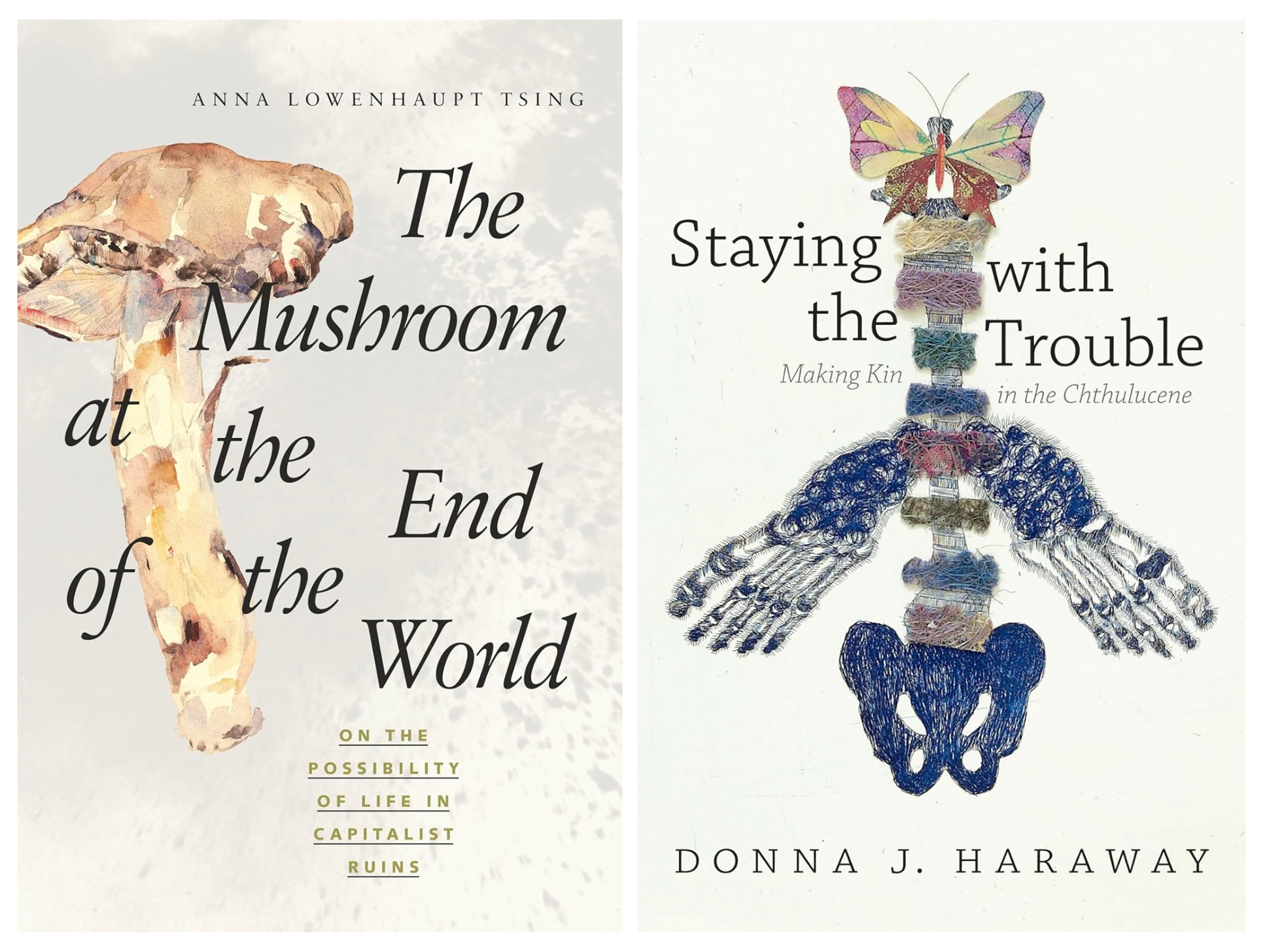
In the first dossier, we used the term degrowth, but I’ve since shifted to thinking in terms of scalelessness, inspired by Rory and Oliver over at OK-RM. To me, scalelessness is about being able to think across multiple scales at once. Nature does this effortlessly – it moves between the microscopic and the planetary simultaneously. My practice this year has really been about exploring my relationship to scale, and ecology naturally became part of that.
Encounter is a term Anna Tsing uses a lot. It’s a really useful way to rethink what it means to interact. We’ve transformed almost all interactions into units of transaction, but an encounter carries serendipity, chance and chaos. I think that’s really important.
The decision to make the dossiers physical is intriguing – there’s no downloadable PDF; they exist only as a limited-edition print run of 1,000. In Non-Things in the Lifeworld, Byung-Chul Han argues that tactile, material objects are important because they root us in reality in a world where so much of life is digitised and in the cloud. It’s interesting that this physical approach appears both in the dossier project and in work on merch. Was this deliberate, and does physicality play a role in the thinking behind the work?
It was definitely intentional. A lot of it comes from having spent over a decade in the luxury industry – creating a highly elevated experience has always been part of the ethos for how OAS presents itself. There was also a focus on depth of engagement. The idea of limiting it to 1,000 copies was inspired by Chris Dixon from A16Z., who argues in an essay that one of the most foundational steps in growing a business – even when aiming for millions of users – is to start with your 1,000 true fans.
Part of the decision to gatekeep distribution was to create a self-selecting, highly qualified audience. There’s this metaphorical framework of the probe versus the beacon. Most agencies today function as probes – they cold-mail, they probe the cosmos, they send out a signal. At OAS, we wanted the dossier to act as a beacon, where people who encounter it, in any form, recognise it and think, “Oh yeah, I f**k with that”! I’m all for gatekeeping. The algorithm has overly democratised culture in a way that can harm subcultures, dilute them or expose them to a wider audience before it can incubate as a community. For me, it’s completely fine if this isn’t for everyone – it’s actually great if it isn’t.
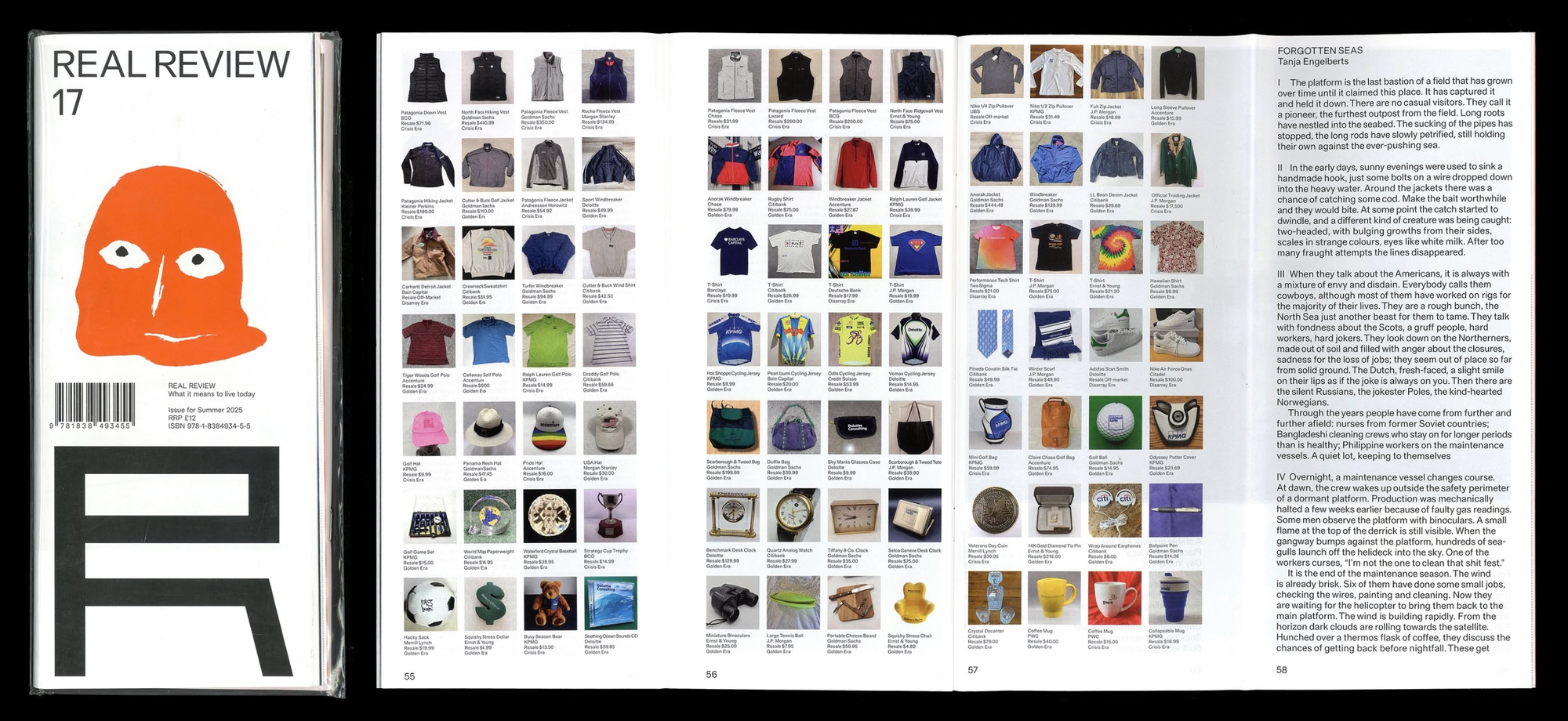
Earlier this year, you collaborated with fashion designer Peter Do to create a uniform for OAS. You’ve also done compelling research for Jack Self at Real Review on corporate merch. More broadly, merch is having a moment in culture – take A24, for example, where merch functions as worldbuilding and plays a huge role in their success.
Peter Do was already a client of ours – we had worked on the business strategy for his diffusion line, PD-168. When he started developing the line, he said, “Okay, my concept is that I want it to be a uniform line.” I thought, “Cool, that’s very OAS,” because we present very corp-core, and are quite cult-like in the way that many fictional corporations are – think Umbrella from Resident Evil, Aperture Science from Portal or Lumon from Severance. I once had a friend describe us as the Balenciaga of McKinsey. There’s a very LARP-y aspect to OAS. I find the whole performance of corporate life to be very fun to play with and subvert. I often say that we’re as much consultants as we are creatives roleplaying as consultants. Ultimately, OAS is as much a commercial entity as it is a playground to experiment with and build new models of how strategy can show up in culture.
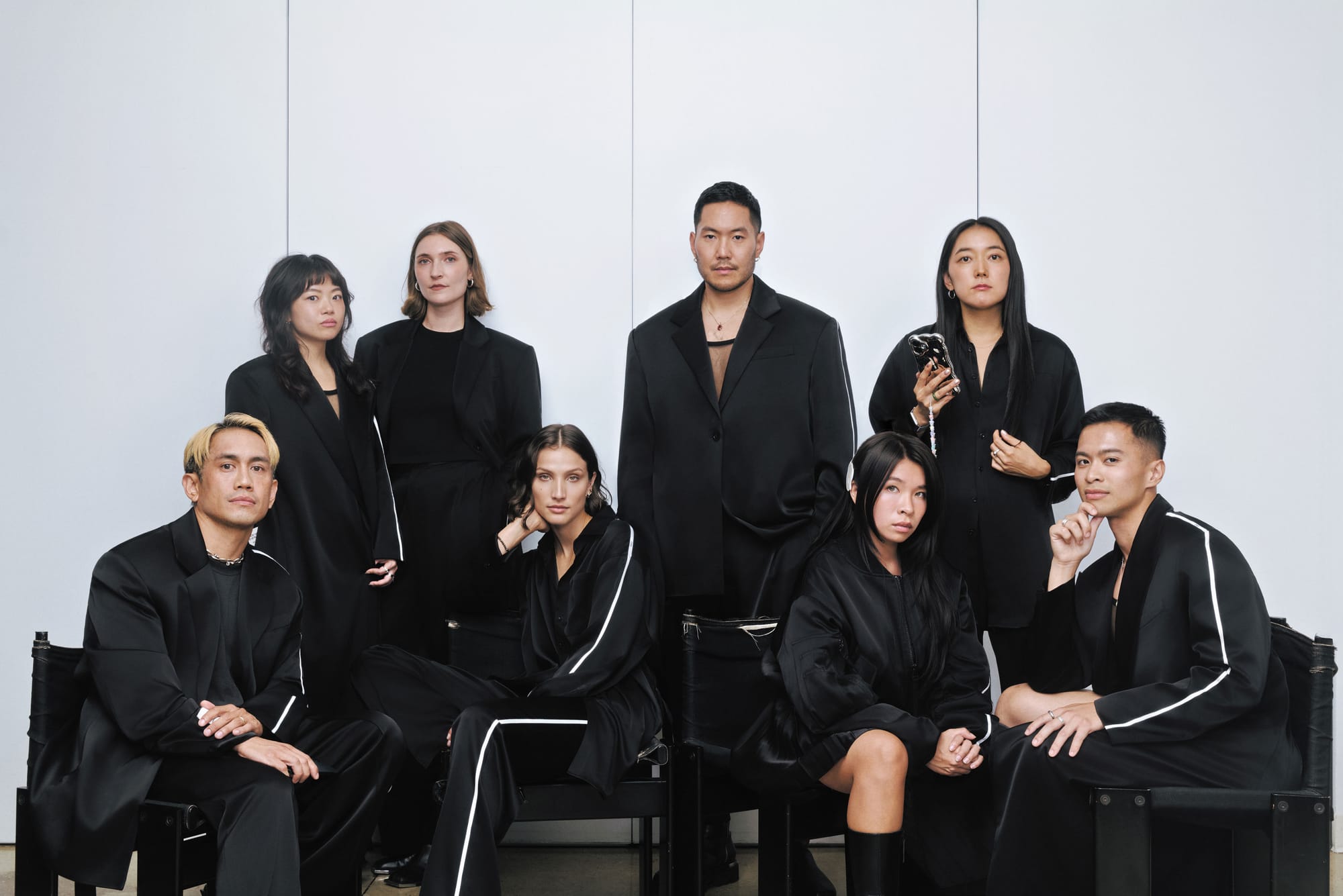
This uniform collaboration then led to our contribution in issue 17 of Real Review. As the uniforms were being developed, I was telling Jack Self about thinking through corporate merch versus corporate uniforms, and how there’s a fascinating design history to corporate merch – but not much written about it. I shared a theory about corporate merch as a lens for understanding financial markets, and he said, “Wait, that’s interesting”. That’s basically how it came about. It was a great way to take the collaboration with Peter Do and channel that intellectual curiosity into a research output.
You also use the term “practice” to describe what you do, and refer to OAS as a “strategy practice” rather than an “agency”. How come?
When I worked at SSENSE as Director of Brand and Content, I spent a lot of time talking to artists, and they often frame their work as a practice. I became enamoured with this idea – it feels intentional and allows you to act almost like a semi-permeable membrane, existing within a capitalist environment while also cultivating yourself as a person. Before then, I had only conceptualised my work in the context of a career. But my time at SSENSE made me wonder if strategy could be as much a career as well as a practice. This was the central motivating question that led to the creation of OAS in 2020.
So "practice" was this operative word that emerged, and there's always been this aspect of performance and spectacle to OAS. Even the name, Office of Applied Strategy, evokes a bureaucratic government department – there’s a semi-ironic, irreverent playfulness in how we poke fun at the management consulting industry. There’s certainly a level of intensity to OAS and we can present in a way that’s quite austere, but when you get to know us, we’re really just a group of fun-seeking, chaos-loving strategists.
This interview has been edited and condensed for clarity.
| SEED | #8363 |
|---|---|
| DATE | 04.11.25 |
| PLANTED BY | PROTEIN |


